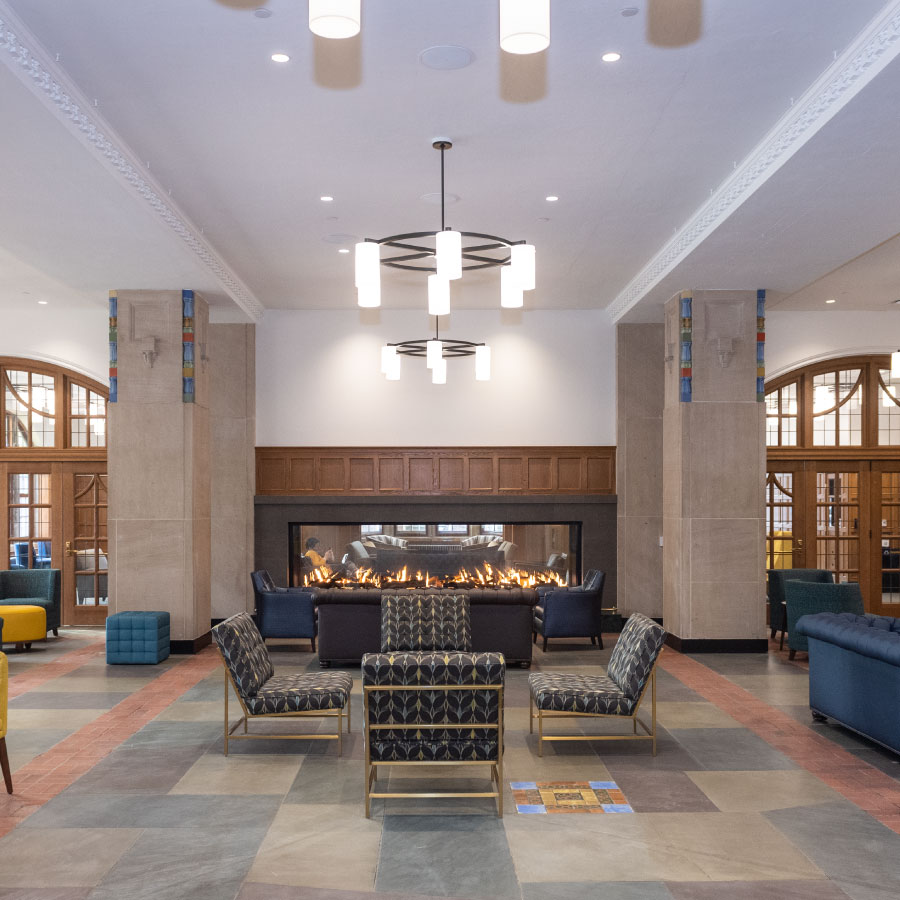Michigan Union Formed
In 1904, the first meeting of the Michigan Union was held in Waterman Gymnasium and was attended by over 1,100 male students. The Michigan Union was envisioned as an “all-inclusive organization” to promote feelings of unity for men on campus. From the beginning, the Michigan Union founders were adamant about finding a home for the organization.
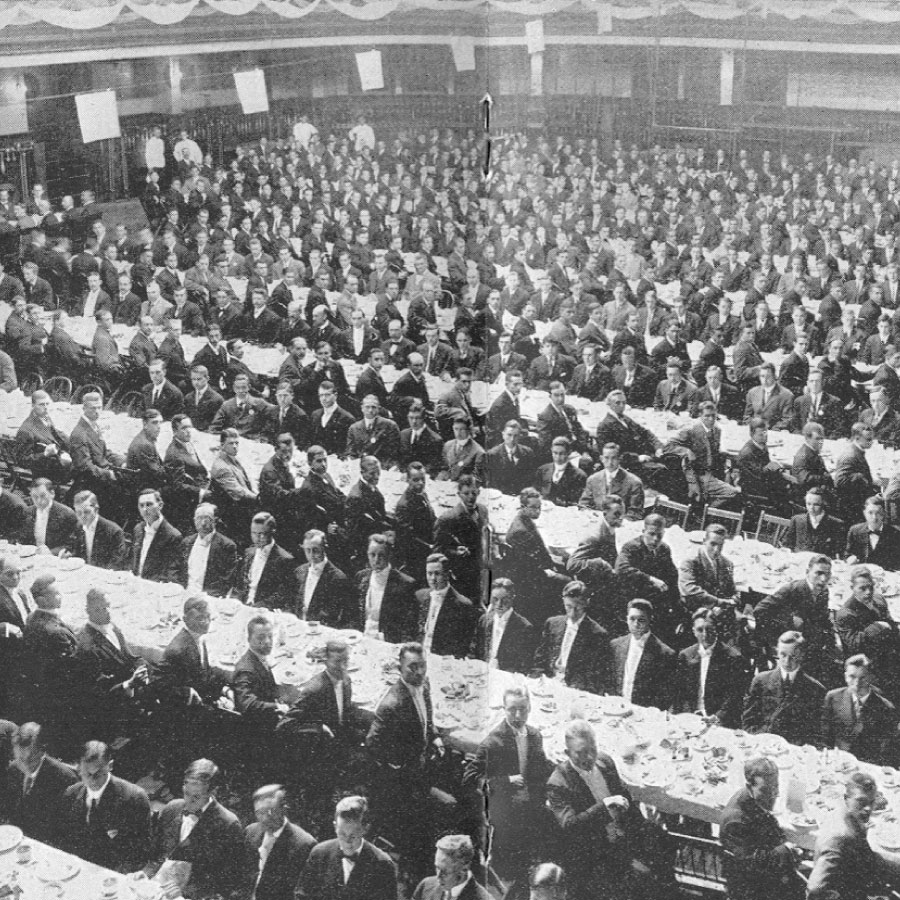
First Attempt
In 1907, the former home of Judge Thomas M. Cooley (who was the dean of the University of Michigan Law School until 1884) was purchased to provide a building for the Michigan Union. Within a few years, the State Street building was found inadequate for the organization’s needs, and the members began planning a more suitable building.
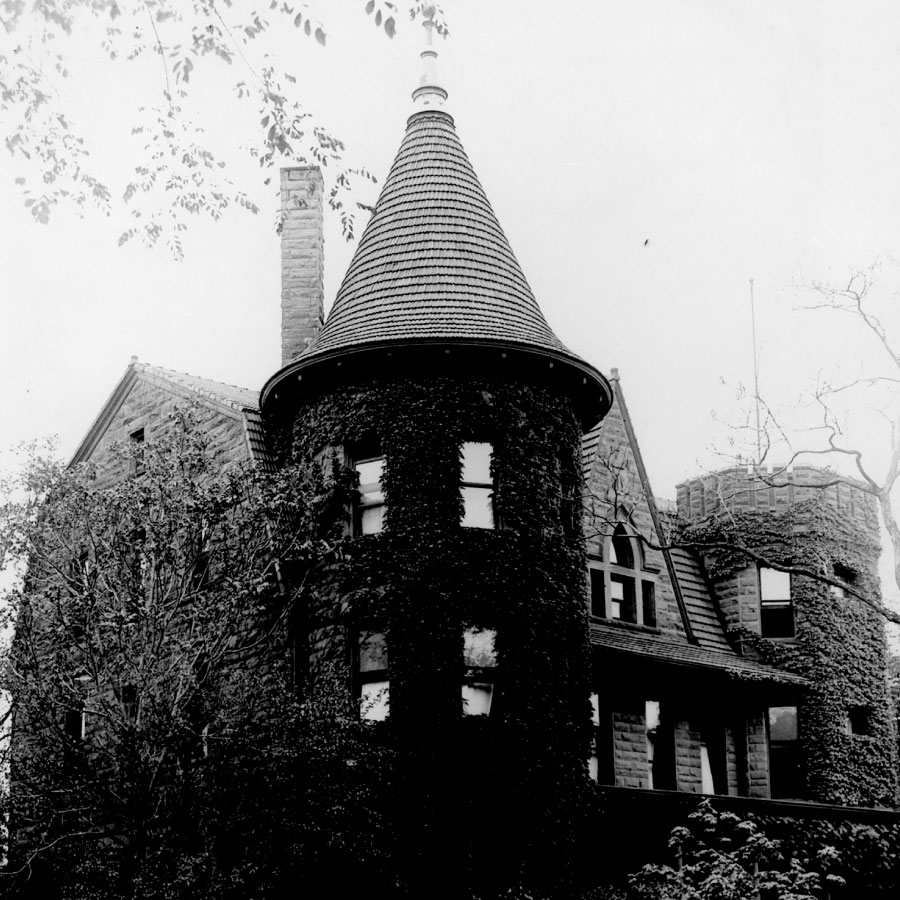
The Union’s Second Start
By 1914 there were over 4,000 members of the Michigan Union, each responsible for yearly dues of $2.50. (According to the 1914 Sears Catalog, $2.50 could also buy 36 pairs of socks, two bedspreads or a wooden chair.) In 1916, the original Union (Judge Thomas M. Cooley’s former home) was demolished and construction on a new Michigan Union began. The money to complete the interior of the building was secured in pledges, but due to the war in the spring of 1917, the pledges became difficult to collect. While in its unfinished state, the building was used as a barracks and mess hall by the Student Army Training Corps.
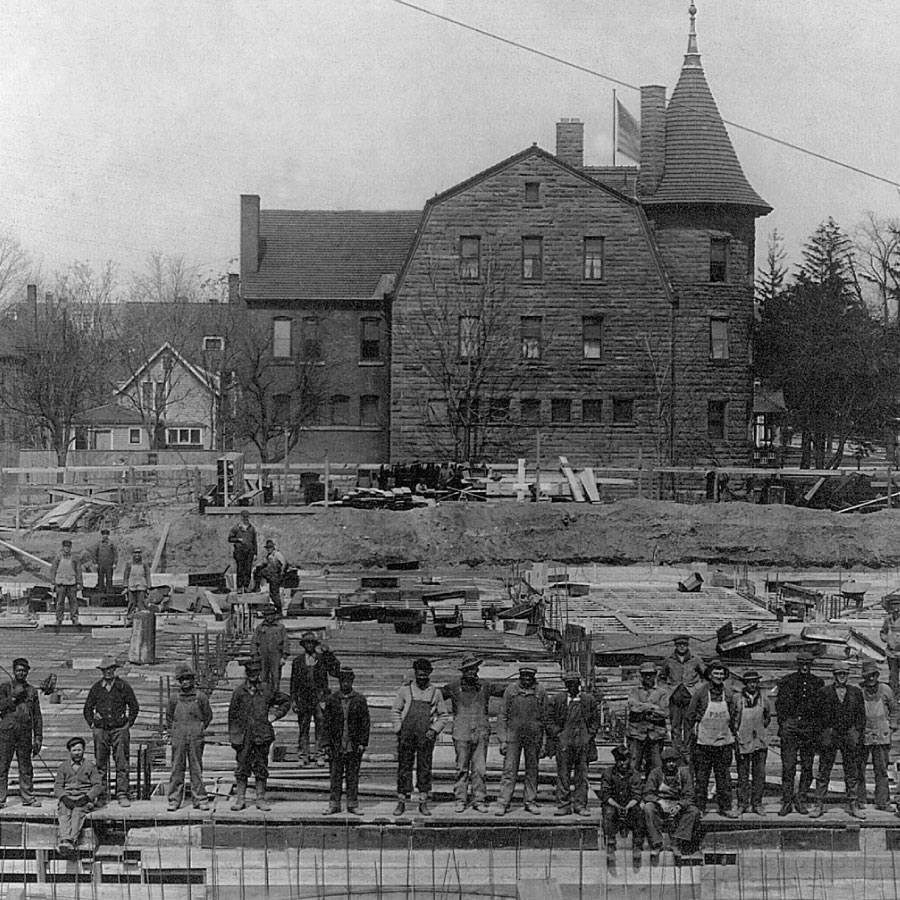
Michigan Union Opens
The Michigan Union, designed by architects Pond and Pond, opened in 1919 after years of fundraising and planning. The original Michigan Union had a bowling alley, barbershop, a billiards room, swimming pool and lodging for visiting alumni. It also had a student eatery, dining rooms, an assembly room and committee rooms. Women were allowed to enter the building through the North entrance only when accompanied by a male escort.
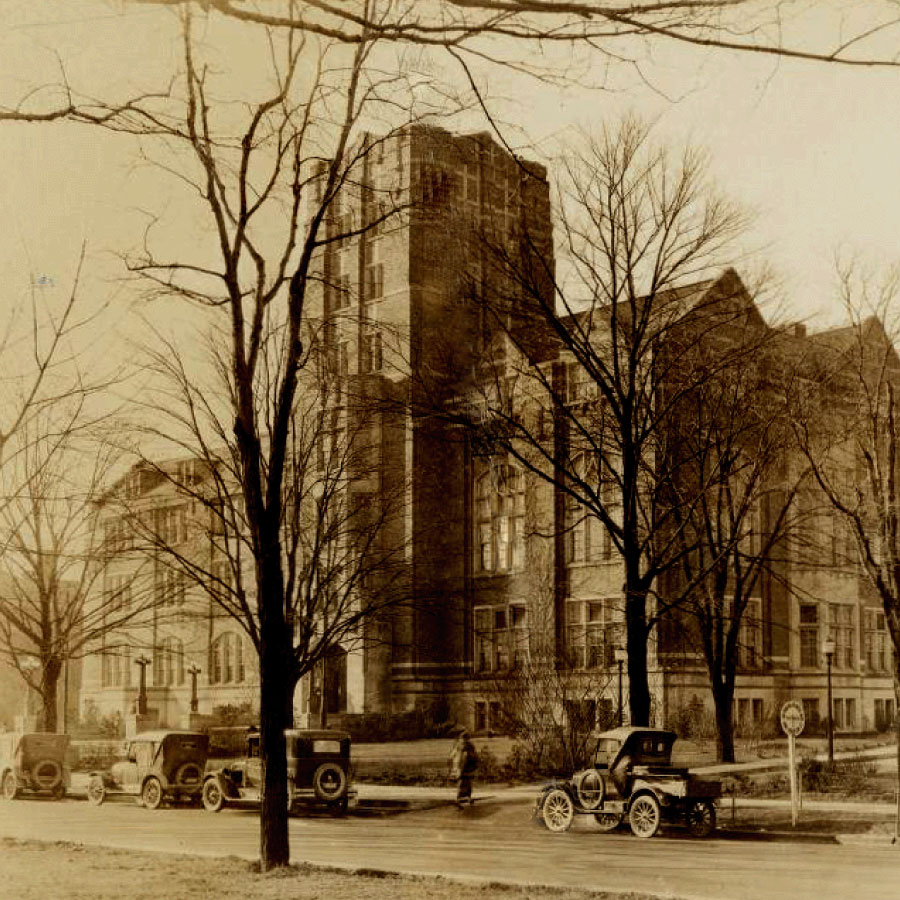
Take a Dip
In 1925, the swimming pool in the Michigan Union was finally completed and opened for use. The pool had been included in the original building design by Pond and Pond, but its construction had been halted due to a lack of funds.
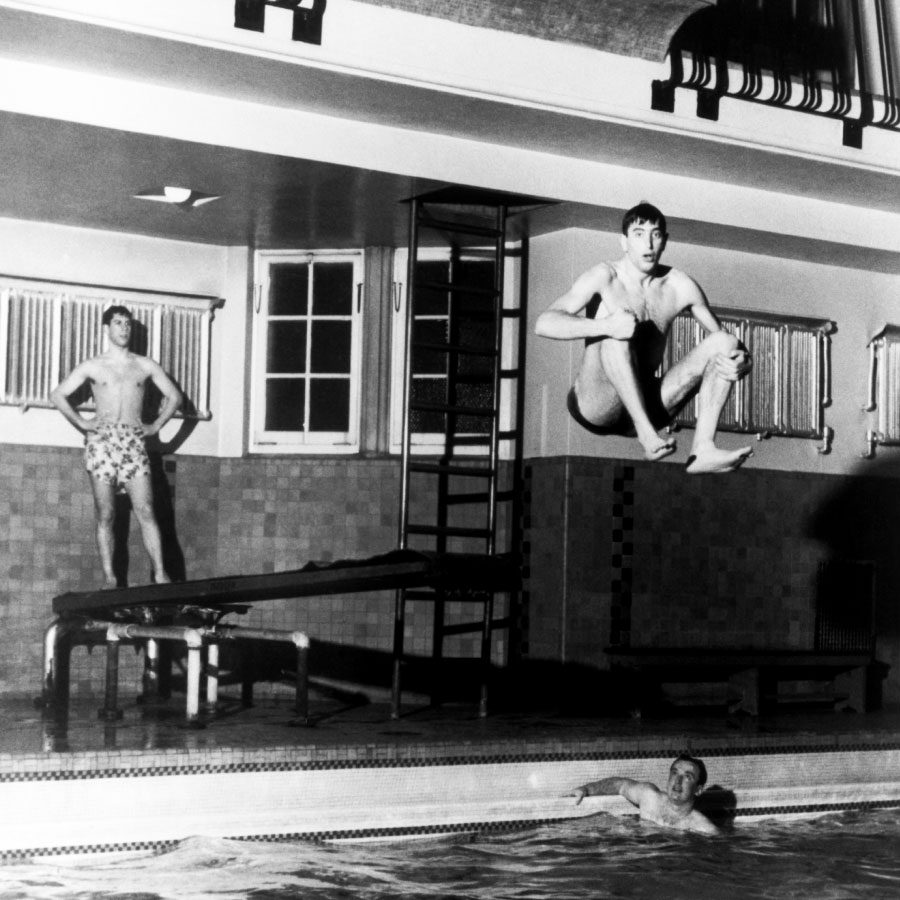
Women Welcome
In 1956, the rules regarding women entering the Union were lifted, and women were allowed to enter the Michigan Union, via any door, and unaccompanied by a male escort. It was not until 1968 that all program areas in the Union became open to women, with the opening of the Billiards Room to all students
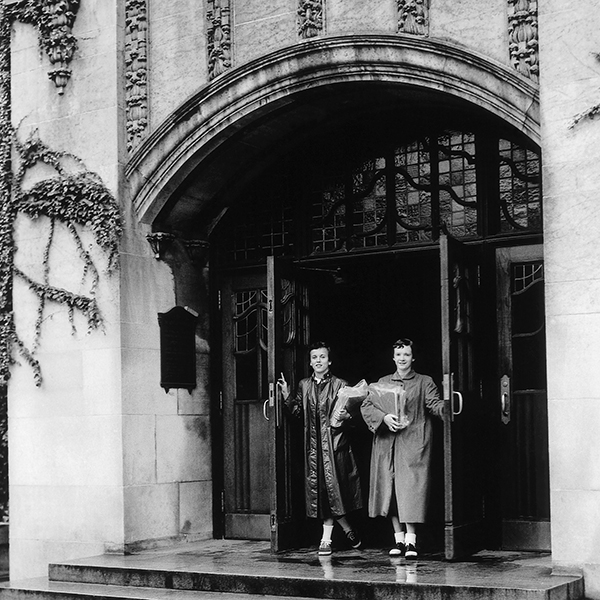
JFK visits the Michigan Union
Early on the morning of October 14, 1960, Democratic presidential nominee John F. Kennedy arrived at the Michigan Union to stay the night. Students, anticipating his visit, had gathered outside the Union. Seeing the throngs of students waiting for him, Kennedy gave an impromptu speech that launched a signature program of his administration, the Peace Corps.
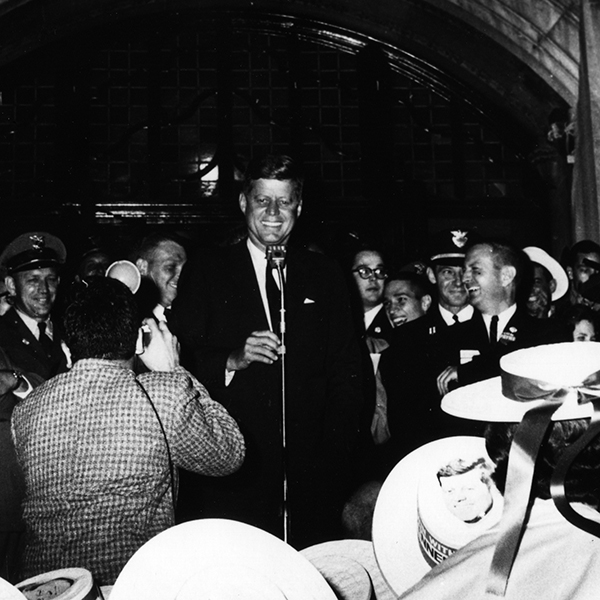
MLK visits the Michigan Union
In November 5, 1962, a visit from Martin Luther King was arranged by the University’s Office of Religious Affairs and the Michigan Union Special Projects Committee. Dr. King gave two speeches to students at Hill Auditorium. Dr. King’s first speech was called “Moral Issues in Discrimination” and his second speech was “The Future of Integration.” In between the two speeches, Dr. King attended a luncheon in the Michigan Union Anderson Room and met with students to discuss his thoughts.
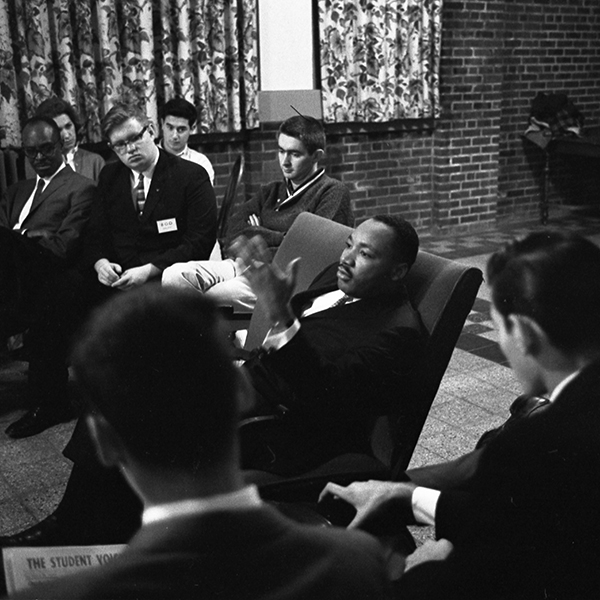
The Michigan Union Closes for Renovations
In 2016, the University Board of Regents approved plans for an extensive renovation of the Michigan Union. The project — which included the input of hundreds of students, alumni and staff — was set to honor the building’s historic integrity and make significant infrastructure and technology upgrades in order to meet the needs of current and future students. The 20-month long renovation began in April 2018. During that time, Union departments worked from temporary spaces on campus and vendors remained temporarily closed.
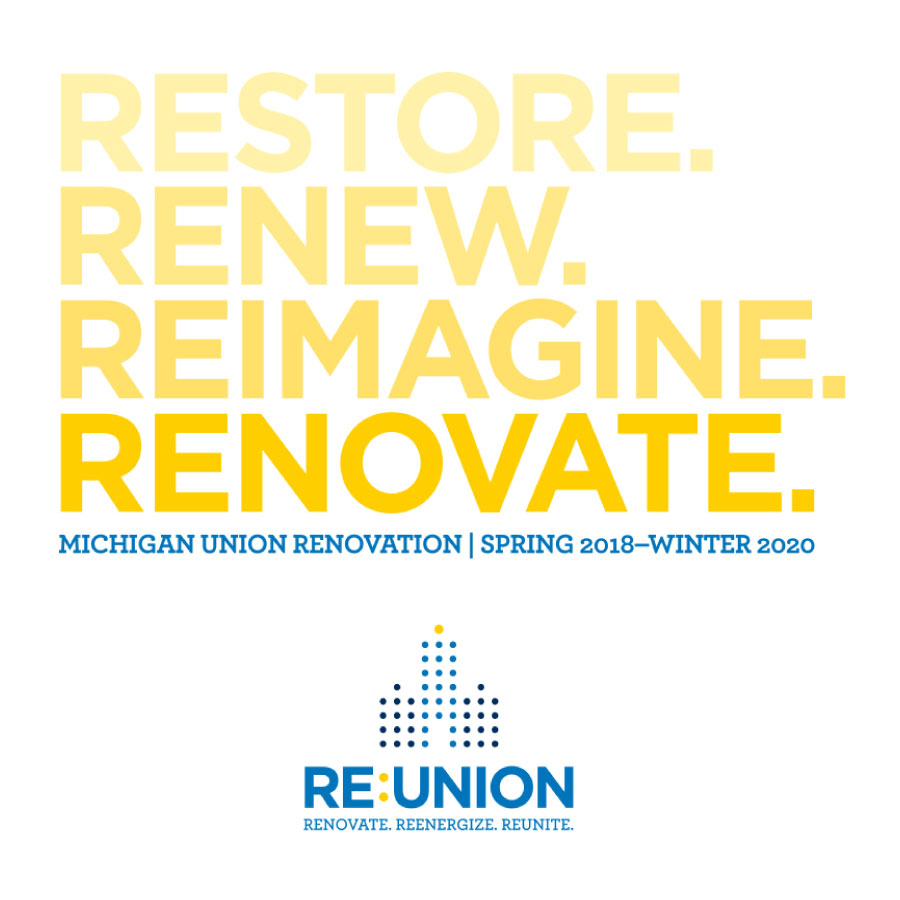
The Michigan Union Reopens
The Michigan Union closed for renovation in April 2018. “This renovation enables the Michigan Union to inspire future generations of Michigan students who will challenge the present and enrich the future,” noted Susan Pile senior director of University Unions and Auxiliary Services. Following the 20-month project, which aimed to restore and reactivate the building while maintaining its historic fabric, hundreds of students, faculty, staff and guests walked through the doors of the updated landmark for a reopening celebration. Today, new spaces include the collaborative IdeaHub, year-round courtyard, South Lounge and Willis Ward Lounge.
